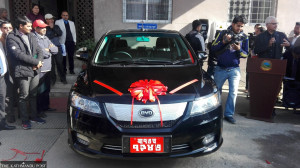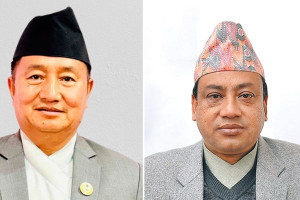Editorial
Gyanendra’s burden
The ultimate responsibility for Friday’s deaths and destruction lies with the ex-monarch. He must pay for it.
The conduct of pro-monarchy forces during their protests in Kathmandu on Friday was not befitting members of a civilised society. Their only intent seemed to be to terrorise people and use the resulting anarchy to force the state to bend to their wishes. Due to their recklessness, at least two people have been confirmed dead. Scores of others, including members of security forces, have been wounded. People’s homes have been ransacked, businesses looted. There were targeted attacks on media houses. No way can these be called democratic political acts that are meant to garner support for a political cause. They were rather designed to sow anarchy. There can thus be no ifs and buts about this: those responsible for these crimes must be apprehended and punished.
Mainly responsible for Friday’s mayhem are the ‘commander’ of these protests Nabaraj Subedi and the ‘field commander’ Durga Prasai. But then there is an even bigger culprit: Gyanendra Shah. In the lead-up to Friday’s protests, the above-mentioned pro-monarchy leaders had sat down with the former king to chart out a modus operandi for the March 28 protests. In other words, Friday’s protests were part of Shah’s bid to come back as king. The ultimate responsibility for the day’s deaths and destruction thus lies with the ex-monarch—and he must be made to pay for it.
Yes, there is a lot of discontent with the political class—and justifiably so. Nepal’s main political actors have time and again let the country down. Corruption is widespread. Service delivery is slow and erratic. Making things worse, even in these most turbulent times when he should be looking to calm things down, the prime minister speaks more like a rabble-rouser than a statesman. So a lot of people are justifiably upset and looking for change. But If recent election results and the size of recent pro-monarchy protests are anything to go by, there are no credible signs that the majority of Nepalis want a return of the discredited institution. But this is an issue for another day.
Right now, the focus should be on prevention of further acts of destruction and saving people’s lives and properties. This must start by punishing the main instigators of violence. The royalists may argue at this juncture that the only credible way out would be to somehow ‘accommodate’ the monarchy. But after Friday’s events, that is out of the question: the pro-monarchy forces have lost any moral ground to ask for a settlement.
Not that the royalists were responsible for all the destruction. There were also major security lapses. For instance, why did the government allow a sensitive spot like Tinkune—next to the Tribhuvan International Airport, and close to the national parliament—for the demonstration? Why didn’t it heed security forces’ advice that the gathering be allowed in a more remote locale? And, on Friday, why were the security forces so slow to respond to acts of arson and vandalism even as people in Tinkune whose properties were being damaged pleaded for urgent help?
Yet these failures of government forces do not, in any way, absolve the leaders of the pro-royalist protests whose conduct was clearly aimed at instigating violence—with Durga Prasai even trying to run his vehicle over security personnel. They deserve legal action. In the larger picture, after Friday’s events, the leaders of the pro-monarchy protests have lost all credibility as political actors.




 22.39°C Kathmandu
22.39°C Kathmandu
















